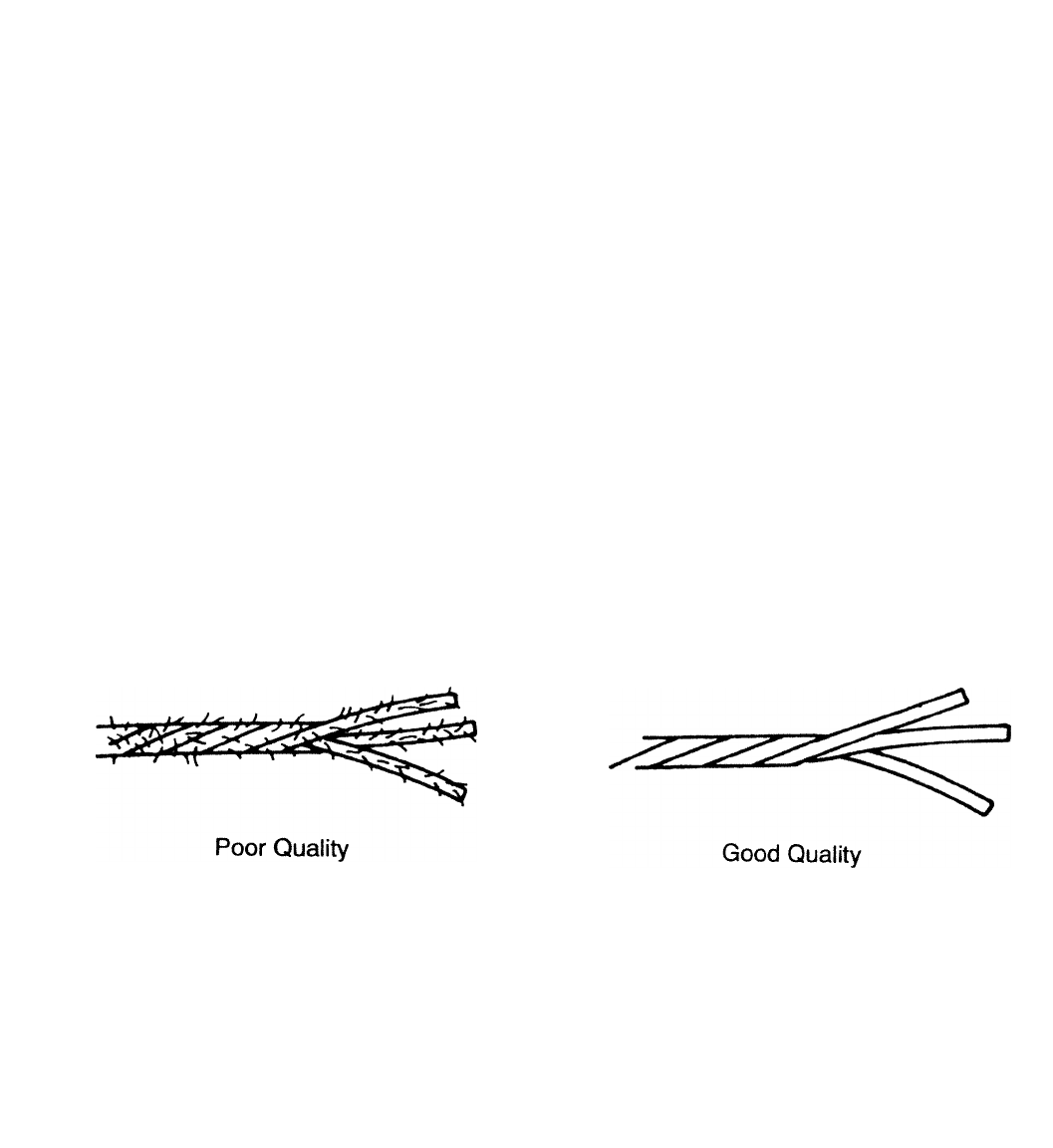Instruction Manual
Table Of Contents
- TABLE OF CONTENTS
- tNTRODUCTtON
- SECTION I
- KNOW YOUR MACHINE - MODEL 2000 ATS
- SUPERLOCK SET UP & MAINTENANCE
- HINTS FOR SUCCESSFUL STITCHING
- Thread Selection
- NEEDLE REPLACEMENT
- NEEDLES, THREAD & FABRIC CHART
- SECTION II - THREADING & TENSION
- )
- NEEDLE THREADER
- HELPFUL HINTS - CHANGING THREAD
- TESTING STITCH
- THREAD TENSIONS
- ADJUSTING THREAD TENSION
- SUPERLOCK SEAMS & SEAM FINISH
- ADJUSTING STITCH LENGTH
- ADJUSTING CUTTING WIDTH & BALANCE OF STITCH
- ADJUSTING CUTTING WIDTH
- SECURING BEGINNING & END OF SEAM
- OUTSIDE CORNERS
- INSIDE CORNERS
- CORDED OVERLOOK
- RIBBING
- CASING OR HEM FOLD

)
HINTS FOR SUCCESSFUL STITCHING
An understanding of the following variables will make your Superlock run smoothly and
your work will look professional. Before sewing, always test the compatibility of your fabric,
thread, pressure, stitch length, and tension.
Thread Selection
When selecting the proper thread, choose one that is compatible with the fashion and
the fabric. Polyester threads (or polyester based) are most commonly used for general
sewing purposes. Threads of different fibers (cotton, rayon, silk, etc.) are available for
special sewing.
Quality is a very important consideration when selecting a thread. A thread of poor
quality will result in operating and stitching problems on any type of sewing machine. Syn
thetic threads are made by twisting filaments together. Lower quality synthetic threads are
made by twisting short, leftover filaments of polyester together. The result is a "hairy*
appearance and a weaker thread. Better quality threads are made by twisting long continu
ous filaments together. This thread is stronger and smoother, thus fewer operating prob
lems will occur. Brand name and price do not necessarily represent quality in a thread.
The only true test of thread quality is close examination.
A variety of threads are available for overlooks. They may be of cotton, cotton-
wrapped polyester, polyester or nylon (Wooly Nylon®). These are most often put up on
cones or tubes. Threads for the overlock are generally finer and lighter in weight than
standard sewing machine thread. This is because of the large amount of thread that builds
up in an overlook seam. Finer thread makes for a less bulky seam. Your Superlock will
handle thread on cones or spools. Many decorative threads will be discussed later in this
workbook.










